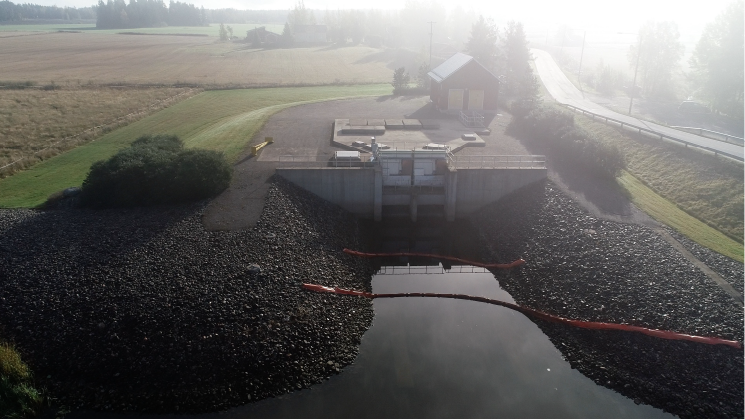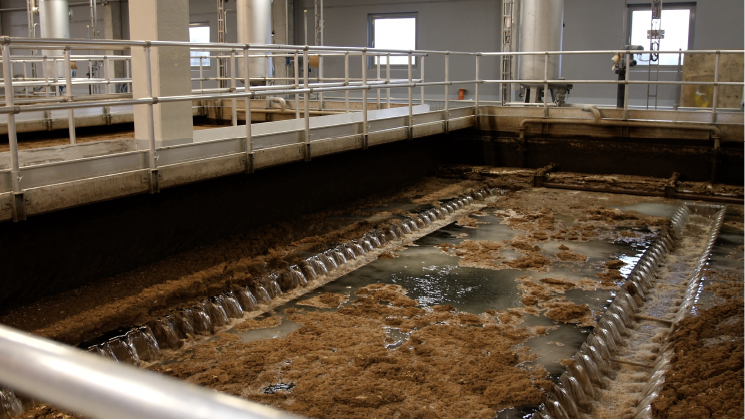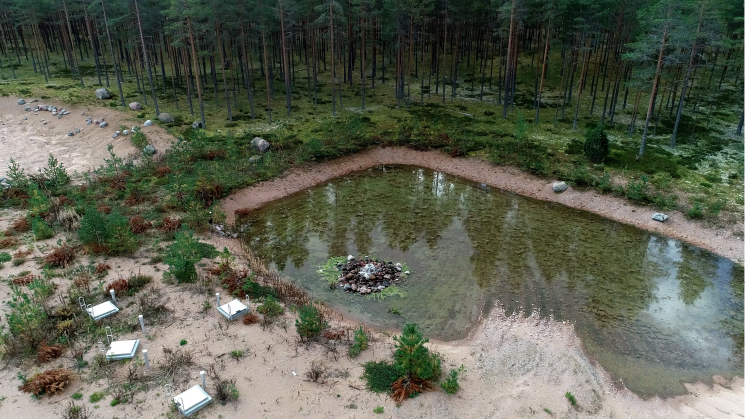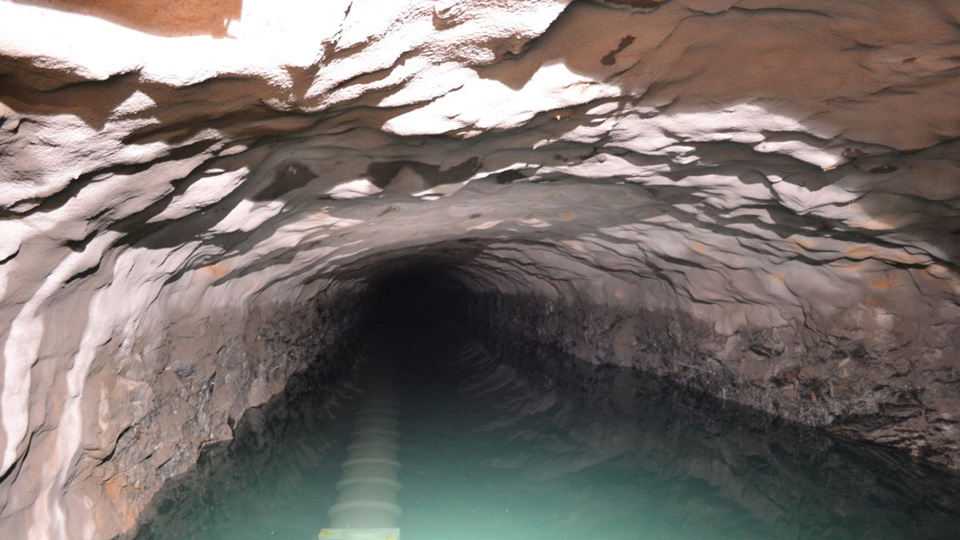Water intake
The raw water for the artificial recharge facility comes from the clear River Kokemäenjoki. The river water has the physical, chemical and microbiological qualities that make it suitable for the production of artificial groundwater. The quality of the river water is monitored using continuously operating measuring devices. The River Kokemäenjoki is one of the largest rivers in Finland. Less than 0.5 % of the river’s average discharge is used by Turku Region Water.


Pre-treatment of raw water
From the raw water intake, the water is pumped to the pre-treatment facility. Pre-treatment process consists of sieving, coagulating and filtering phases to remove the solid matter contained in the river water. The removed solid matter is further used as soil conditioner.
The quality of the water is constantly monitored during the pre-treatment process. The pre-treated water is then pumped to Virttaankangas aquifer area via a 30 km pipeline. It takes about 12 hours for the water to reach Virttaankangas from the raw water intake facility.
Esker aquifer recharge
The pre-treated water is infiltrated into the Virttaankangas esker aquifer through 22 infiltration basins. From the basins, the water percolates downward and mixes with the groundwater in the esker. The groundwater flows from the infiltration areas to the production wells. The flow routes of the groundwater and the geological architecture of the aquifer have been carefully studied using 3D models of the area. By using the model results we can tell how much water is to be infiltrated in the different infiltration areas in order to keep water infiltration and intake in balance. This is why the production of the artificially recharged groundwater does not adversely affect the groundwater levels of the facility’s surroundings.

Formation of artificially recharged groundwater
The water flows through the aquifer for about three to four months after infiltration. During this time, the water quality of the infiltrated water begins to resemble natural groundwater. The artificial groundwater is then pumped up through thirteen production wells.
Virttaankangas esker is well suited for the production of artificially recharged groundwater, which is why the water is so good and clean that e.g., no pH adjustment or iron removal is needed, as is often the case in other Finnish groundwater intake facilities. The water from the Virttaankangas esker requires no treatment before distribution to consumers.
Water transportation
The groundwater is pumped from the production wells to a clean water reservoir, from which it is gravitationally pipelined to bedrock reservoirs located in Turku and Lieto along about 60 km of pipelines. It takes about 1.5 days for the water to reach the underground reservoirs from Virttaankangas. The electrical turbine at the end of the pipeline leading to Saramäki in Turku regulates the flow of water and produces energy. The water that is pumped for consumption from Saramäki has usually been pumped from the Virttaankangas production wells two days earlier.


Water storage and distribution for consumption
In Turku, the water is stored in Saramäki bedrock reservoir. Built into solid bedrock, the cool reservoir keeps the water clean and protected from outside conditions. Drinking water is then pumped to the required pressure and distributed from the reservoirs to consumers in municipalities. Before this, the water is disinfected using UV light and chloramine. This ensures that the water quality remains good for all consumers. At its longest, it may take several weeks for the water to reach the furthest parts of the distribution network.

